近期发生的“6·13”十堰燃气爆炸事故、柘城县“6·25”重大火灾事故再一次为城市安全敲响了警钟。
借助科技力量,运用先进监测设备和大数据、物联网等现代化手段,不断打通数据孤岛,强化用信息技术赋能城市安全管理,才能及时发现风险、管控风险、化解风险,提升城市人民群众的获得感、幸福感、安全感。
本期工作动态介绍部分城市在生命线工程监测、危化品停车管理、大跨径桥梁安全健康监测、城市道路及地下空间安全探测等方面科技助力安全发展的典型做法,供各城市交流参考,本篇为第2期。
强化城市生命线动态预警
合肥市“城市生命线安全运行监测系统”
合肥市聚焦预防燃气爆炸、桥梁垮塌等重大安全事故,率先建成“城市生命线安全运行监测系统”,利用100多种监测传感器,依托大数据、云计算、区块链、人工智能等技术,对高风险和人口密集区域的给排水、燃气、热力、桥梁等城市生命线进行实时监测,建立“前端感知—风险定位—专业评估—预警联动”城市生命线工程安全运行与管控精细化治理创新模式,实现风险快速精准定位、及时预警处理防范。
目前,合肥全市共布设了8万多套前端感知设备,涵盖51座桥梁、2000多公里给排水、燃气、热力等地下管线、58公里综合管廊,建立了预警信息三级联动处置机制,成立了大数据中心和24小时监测中心,每天实时采集分析500多亿条运行数据,及时将预警信息分级分层加推到城市生命线运管企业、行业主管部门和市应急指挥中心,联动处置预警信息。系统运行以来,实现月均有效报警92.8起,成功预警燃气管网泄漏、沼气浓度超标、供水管网泄漏、水厂泵站运行异常、路面塌陷、重型车辆超载等突发险情6000多起。较系统应用前,全市地下管网事故发生率下降60%、风险排查效率提高70%。
预警案例
2019年9月24日9点20分,燃气监测系统发现裕溪路与幸福路交叉口附近位于郎溪路高架桥下燃气井RQ9148出现甲烷浓度超限报警,经分析研判初步判断为燃气泄漏并及时推送至燃气集团。经燃气集团现场复核确认为第三方施工原因导致燃气管道泄漏,发现可燃气体已填充约23.5米,浓度爆表,现场充满了刺激性气味。燃气管道泄漏的位置处于老城区内,周围人口密度较大,其上方是郎溪路高架桥,车流量较大,且周边300米范围内有5处党政机关、9所学校、3所医院、1处中石化加油站、1座大型高架桥、1个大型商业广场等,一旦发生爆炸,会造成巨大的人员伤亡、财产损失和桥梁损伤。燃气集团立即关闭泄漏点两端截断阀进行抢修作业,至9月25日凌晨燃气管道抢修完成,避免了恶性事件的发生。

合肥市“城市生命线工程安全运行监测中心”
南京市建邺区“民生工程消防物联网预警系统”
南京市建邺“智慧消防”建设模式是指建邺区民生消防物联网项目,项目始建于2018年,现在已经建设三期。建邺物联网平台采用标准的采用NB-IoT的数据通讯协议和标准的终端通信协议接入各种品牌厂商的各种消防物联网感知终端设备,感知终端可探测可燃气体泄露、烟雾超标、电气线路过热、消火栓管网压力不足、消防水箱液位不足等信息,向平台上报信息和报警。平台收到报警信息后,如果是故障信息则直接通知运维单位处置;如果是火警或煤气报警则及时通知住户处置警情或者逃生,同时通知附近消防站消防员/消防特勤人员及时核实与处置初期火情,一旦确认真实火警直接推送119智能接处警系统报。
目前,建邺物联网共布设了1万多套消防前端感知设备,包括4000多台无线感烟探测器、6000多台无线可燃气体探测器、176套简易喷淋装置、312套无线水压探测器。终端设备主要分布在建邺区各街道、社区的九小场所、电动车充电点、老旧小区的弱势群体家庭以及群租房等场所,涵盖南京市建邺区各民生工程内的6个街道、72个社区、4个商务建筑、1个派出所。建邺区消防救援大队建立了预警信息三级联动处置机制,成立了大数据中心和24小时监测中心,每天实时采集分析10万条运行数据,及时将预警信息分级分层加推到城市运管企业、行业主管部门和市应急指挥中心,联动处置预警信息。
系统运行以来,实现月均有效报警24.3起,成功预警燃气管网泄漏、烟雾浓度超标、供水管网泄漏、水厂泵站运行异常796多起。较系统应用前,全市地下管网事故发生率下降60%、风险排查效率提高70%。上述场所之前没有安装任何探测报警设备,属于火灾防控的薄弱环节,尤其是电动车充电点和使用燃气的场所。目前正在全面布点阶段,下一步将通过分区分级管理,由街道、社区负责所辖区域具体报警的及时核实、探测设备维保和燃气管线维修督办。
使用案例
可燃气体探测报警后自动关闭管道阀门。在沿街小餐馆安装部分安装机械手的可燃气体探测器,当探测到煤气浓度超标(浓度超标5%LEL)后,系统向用户发出浓度超标报警和附近消防特勤人员,并通过机械手自动关闭管道阀门,避免发生气体爆燃事故。
真实警情
2020年11月18日23点39分,燃气监测系统发现沙洲街道莲花社区寅春老卤面火灾报警器报警。经分析研判为火灾隐患推送给莲花社区值班室。经莲花社区复核确认为因面馆用火不规范导致起火。门面房位于老城区内,周围人口密度较大,老年人偏多,一旦发生火灾,会造成巨大的人员伤亡、财产损失。社区立即对门面房进行整改,至11月19日凌晨整改完成,避免了恶性事件的发生。
据统计,系统平均每日产生5-10条预警信息,经核实,报警信息中可燃气体泄露报警确实为探测浓度值超标所致,系统预警功能正常。平台开通至今安装使用单位和住户未发生火灾事故,整个建邺区同比去年全年接警起数下降了4.79%,未发生九小场所爆燃事故。
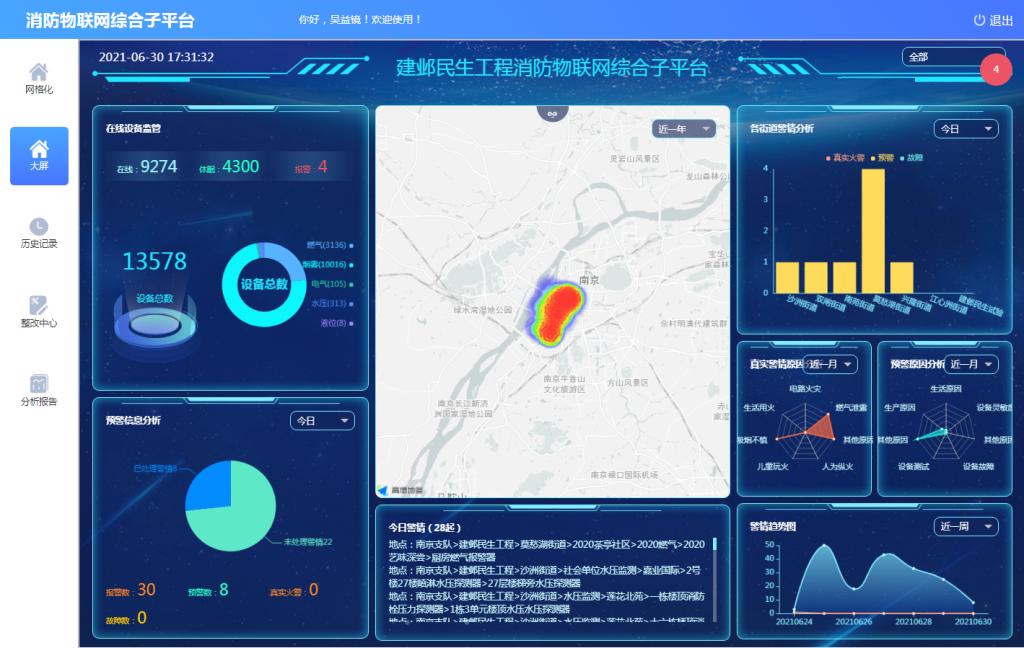
南京市“建邺民生工程消防物联网综合子平台”
建设本质安全化基础设施
苏州张家港市建立“智慧园区管理中心”
张家港市在打造本质安全型城市方面苦练内功,在张家港保税区设立国内首个符合国家行业标准的危化品停车场——张家港市危化品道路运输综合服务中心,运用数字化技术实现车辆人员的全过程安全监控,填补了国内空白。同时,以停车场为中心建立“智慧园区管理中心”全面覆盖对江苏扬子江国际化学工业园的监管服务功能。
张家港市危化品道路运输综合服务中心由江苏省张家港保税区管委会和央企中远海运集团合作开发建设,主要承担张家港市境内危化品车辆道路应急救援、江苏扬子江国际化学工业园应急救援指挥中心、化工园封闭管理、危化品车辆停放、加油、洗罐、维修检测为一体的综合服务功能,该项目总投资4.5亿元,共建有623个停车位、32000㎡丙1类仓库和废水废气处理等设施。停车场设有完备的消防设施、可燃气体检测与报警系统、场内广播系统、高杆红外热成像火灾监控及报警系统、自动消防炮等安全设施和职业卫生设施,采用先进的工艺技术装备设有自动化高架仓库、世界领先的荷兰罐车自动清洗系统。
该停车场是国内第一个符合国家行业标准的危化品停车场(为国家行业标准起草单位之一),采用智慧化管理模式进行管理运作,采用可视化、信息化、智能化的管理系统,设置有车辆引导识别系统、人员身份与行为识别系统、车辆调度与叫号系统、办公区域智能化管理系统等智慧化管理系统。目前,位于停车场内的保税区“智慧园区管理中心”已投入使用,集成“安全环保监控、应急救援指挥、危化品专业停车场和槽罐车清洗、修理、加油”等功能,并于2020年9月成功获评中国石化联合会组织的中国智慧化工园区试点示范单位称号;同时,“智慧园区管理中心”还承担江苏扬子江国际化学工业园智慧园区管理、化工园区应急救援指挥等功能,能够进一步提升张家港市危化品道路运输管理综合能力,进一步提升化工园区综合监管和服务能力,更好的为化工园区及张家港的经济发展提供安全可靠的保障。
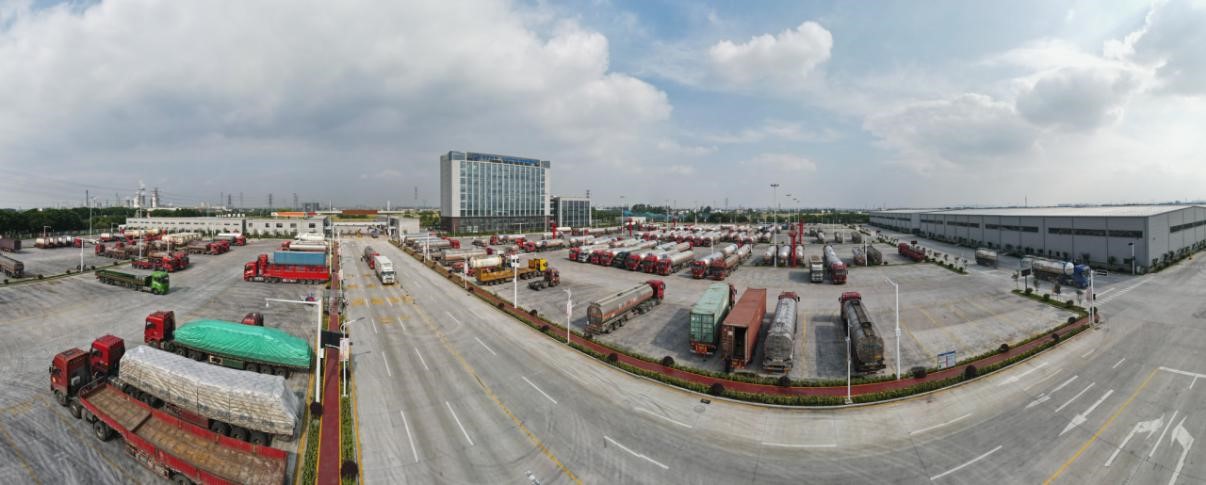
张家港市危化品道路运输综合服务中心
大跨径桥梁安全健康监测
桥梁监测雷达系统
我国现有公路桥梁超过87万座,总长度6万多公里,其中特大桥5700余座、大桥近11万座,总长度约4万公里。特别是大跨径桥梁的建设,大幅度提升了城乡交通能力,促进了经济社会的持续发展。大跨径桥梁具有结构刚度好、通车平稳、伸缩缝设置少等优点,但是也普遍存在主跨长期变形过大等缺点。
开展大跨径桥梁的安全监测,对确保桥梁施工和运营的安全,延长桥梁使用寿命具有十分重要的作用。桥梁变形失稳前期,经常表现为振动异常,传统基于累计位移量和位移速度的变形监测存在一定的局限性。
GT-VibRad桥梁监测雷达系统基于瞬态阵列孔径技术和微波遥感差分干涉测量技术,能够对被测目标表面位移进行高频率、高精度测量,对桥梁、建筑等人工构筑物有很好的监测效果。
桥梁监测雷达系统应用案例
2020年5月,广东虎门大桥涡振事件发生后,应急管理部会同交通运输部组织专家团队,对全国大跨径桥梁的长期服役安全风险开展调研,并调派国家安全生产应急救援勘测队,对三座典型大跨径长期服役桥梁实施监测分析。
应急救援勘测队运用GT-VibRad桥梁监测雷达系统,对广东虎门大桥、江苏江阴长江公路大桥、上海杨浦大桥三座大跨径长期服役桥梁开展了实桥勘测,测量了典型桥梁主桥的振动模态参数、采集了桥梁结构的三维点云模型、解译了混凝土下层的雷达信号图谱,通过和已布设测点的数据比对、位置配准等处理,成功获取了桥面位移、加速度、振动模态等参数的测量结果,为专家团队调研工作提供了数据支撑。
GT-VibRad桥梁监测雷达系统由中国安全生产科学研究院研发,具有监测精度高(监测精度0.01mm)、全天时监测(不受光照条件影响)、全天候监测(不受天气条件影响)、遥测距离远(监测距离1km)、无需人员现场值守、大气误差自行校正、监测数据实时更新等功能特点。可应用于新建桥梁、大型建筑的无损检测、验收,已有桥梁、大型建筑的安全性评估监测,临界寿命桥梁、大型建筑在线监测预警等领域。
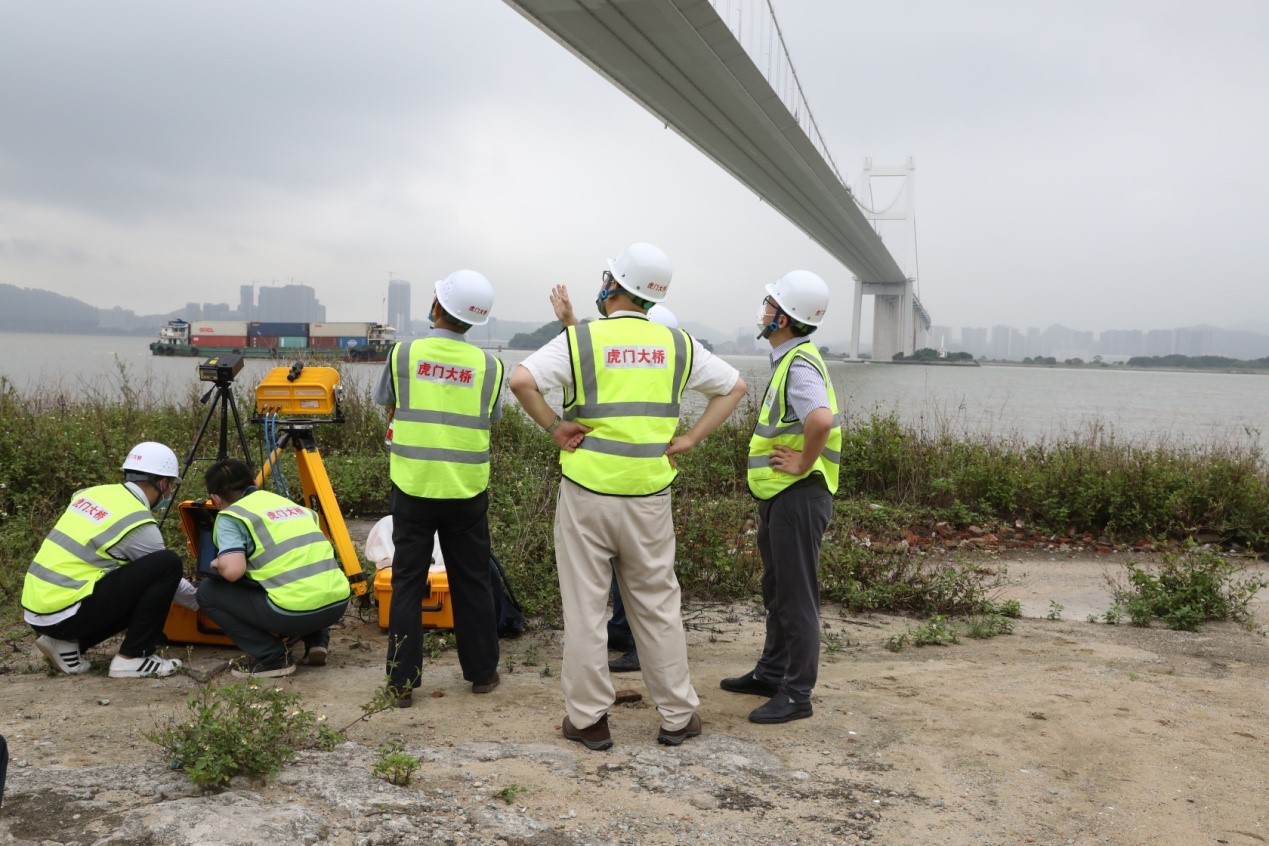
广东虎门大桥主桥振动模态监测
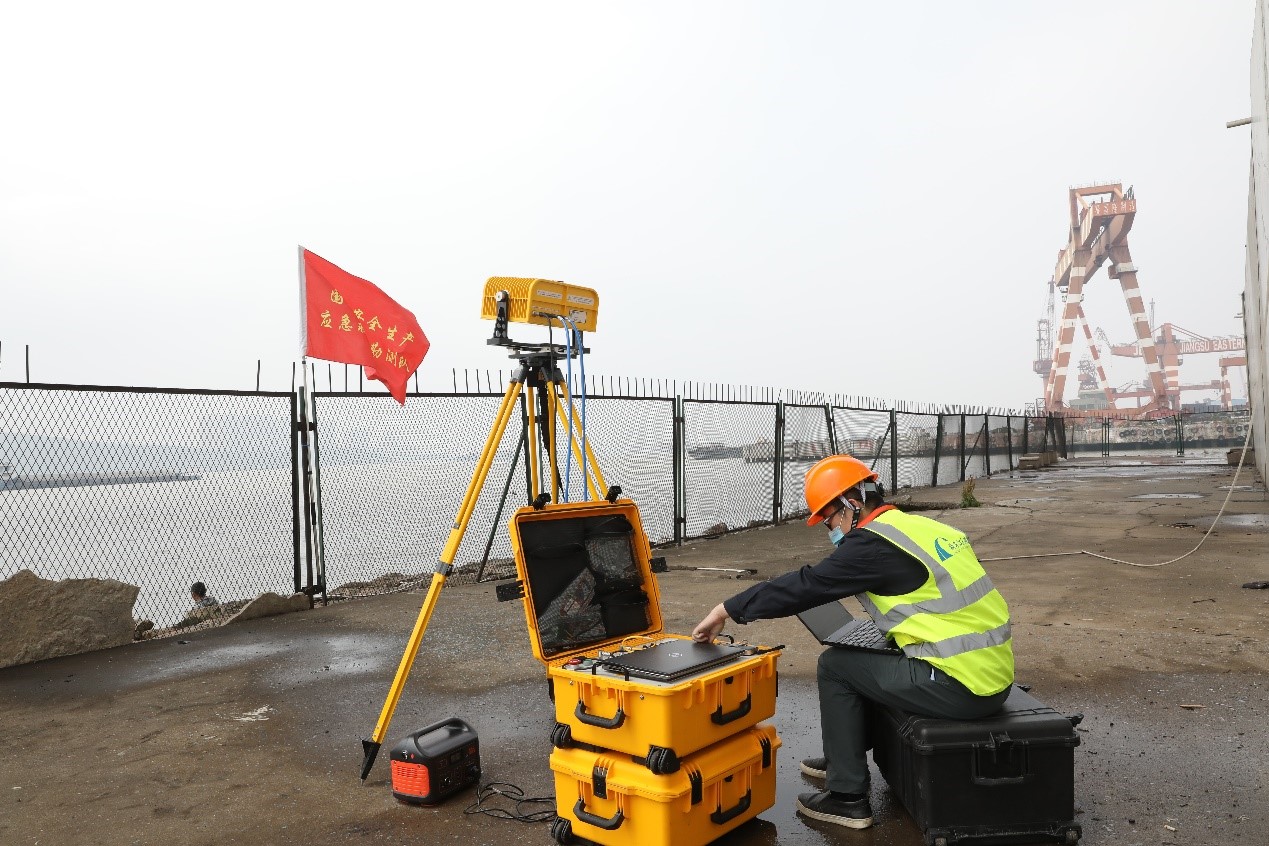
江苏江阴长江公路大桥主桥振动模态监测
城市道路及地下空间安全探测
在城市道路及地下空间开发和利用过程中,城市地下空洞,地下管线腐蚀断裂,地下管廊和地铁隧道形变过大,管片错台、渗漏水、空鼓,结构背后空洞等安全隐患已经严重威胁城市地下空间的安全。
深圳市“城市道路及排水管网安全监测系统”
深圳市聚焦预防城排水管网破损等引起城市道路塌陷重大安全事故,携手国家安全科学与工程研究院、中国矿业大学(北京)率先建成“城市道路及排水管网安全监测系统”,利用多频车载探地雷达技术,集成大数据、云计算、5G人工智能等技术,对高风险和人口密集区域的城市道路和给排水等城市生命线进行实时探测和监测,建立“探测—定位—解释—预警”的城市道路与排水管网安全运行与管控精细化治理创新模式,实现风险快速精准定位、及时预警处理防范。
深圳市福田区给排水网管总里程为1400公里,经过两个月的精准排查,共发现险情36处,其中发现3处大型地下隐伏病害体规模达到65㎡。利用车载多频探地雷达技术,将全区地下管网事故发生率下降60%、风险排查效率提高70%。大大提高了道路安全风险处置能力,为保障城市道路和排水管网安全做出了积极贡献。
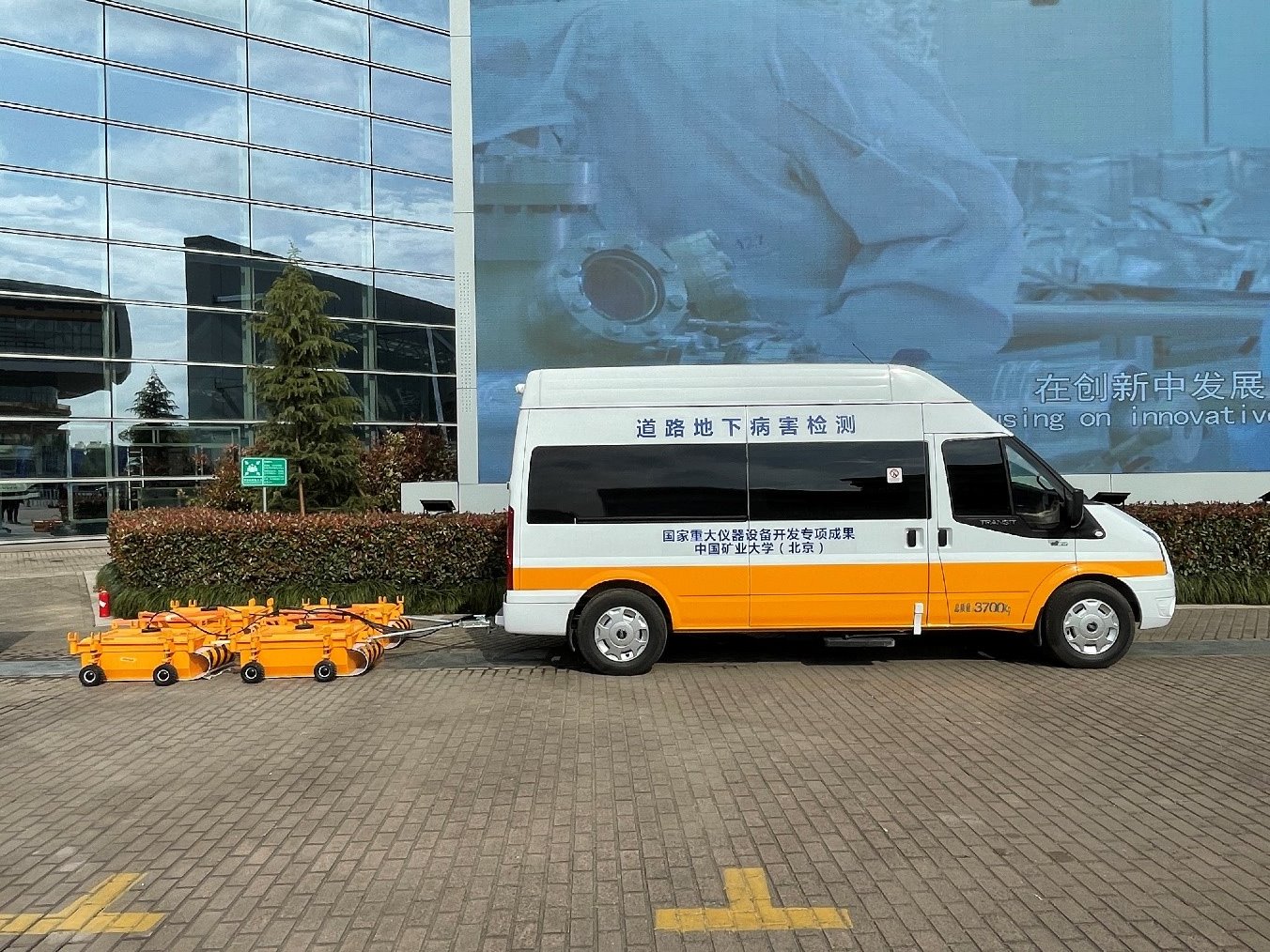
道路地下病害检测车
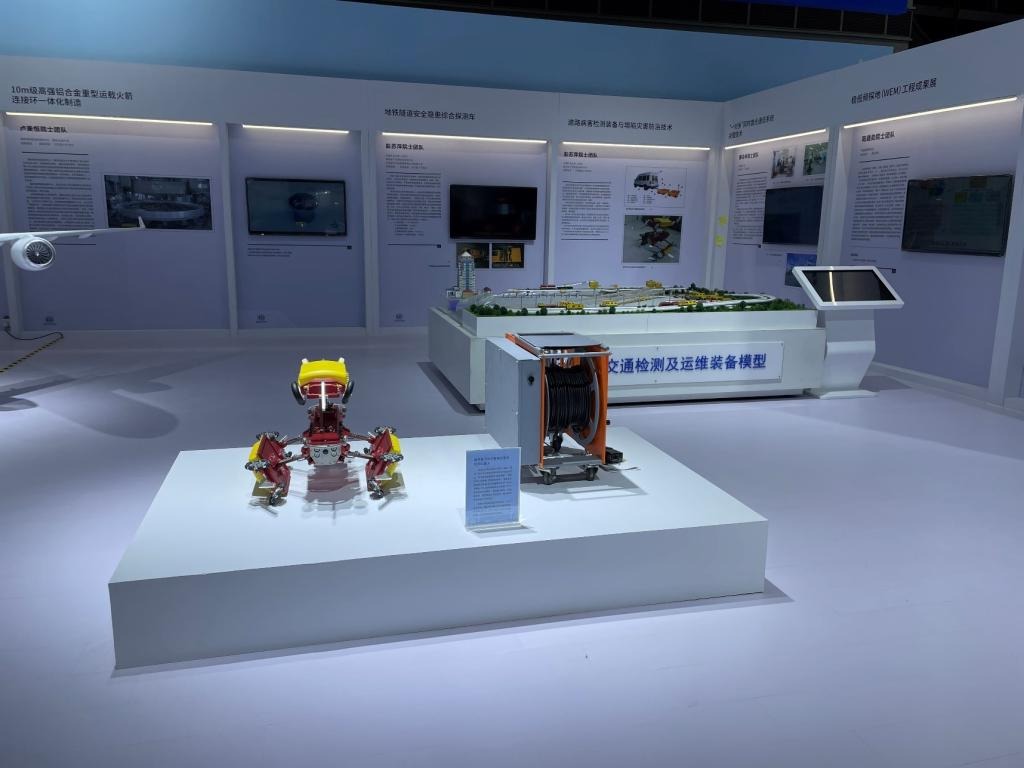
管道病害探测机器人
北京冬奥支线突水事件救援案例
2021年6月7日晚上8点,北京冬奥支线隧道某段在开挖过程中发生突水事故,涌水量达到300立方米/小时。事件发生后,应用超深探测大功率地质雷达对指定里程段进行超深探测,在掌子面附近发现一个富水区,深度为17.2-23.0米、水平长度12.5米,同时在距掌子面前方40米处预测到另一富水区域,深度16.5-22.1米、水平长度10米。事后在隧道内开展了探地雷达探测,并在掌子面涌水口附近有涌出的木桩、碎煤块等杂物,经走访周边和查阅相关资料,初步判断事故路段为早期废弃的小煤窑的巷洞,经过长时间地表水渗漏,巷洞内充积满了水,其可能是本次掌子面突发涌水的主要原因。
北京住总集团针对“城市生命线工程”——地铁隧道规划勘察、隧道建设及运营等不同时期的工程地质隐患,开展地铁隧道基坑超深超前智能探测、地铁隧道安全隐患综合探测、盾构管片外侧注浆体不均匀探测,搭建地铁隧道安全隐患智能诊断及预警平台,为地铁隧道施工和运营安全提供技术支撑。
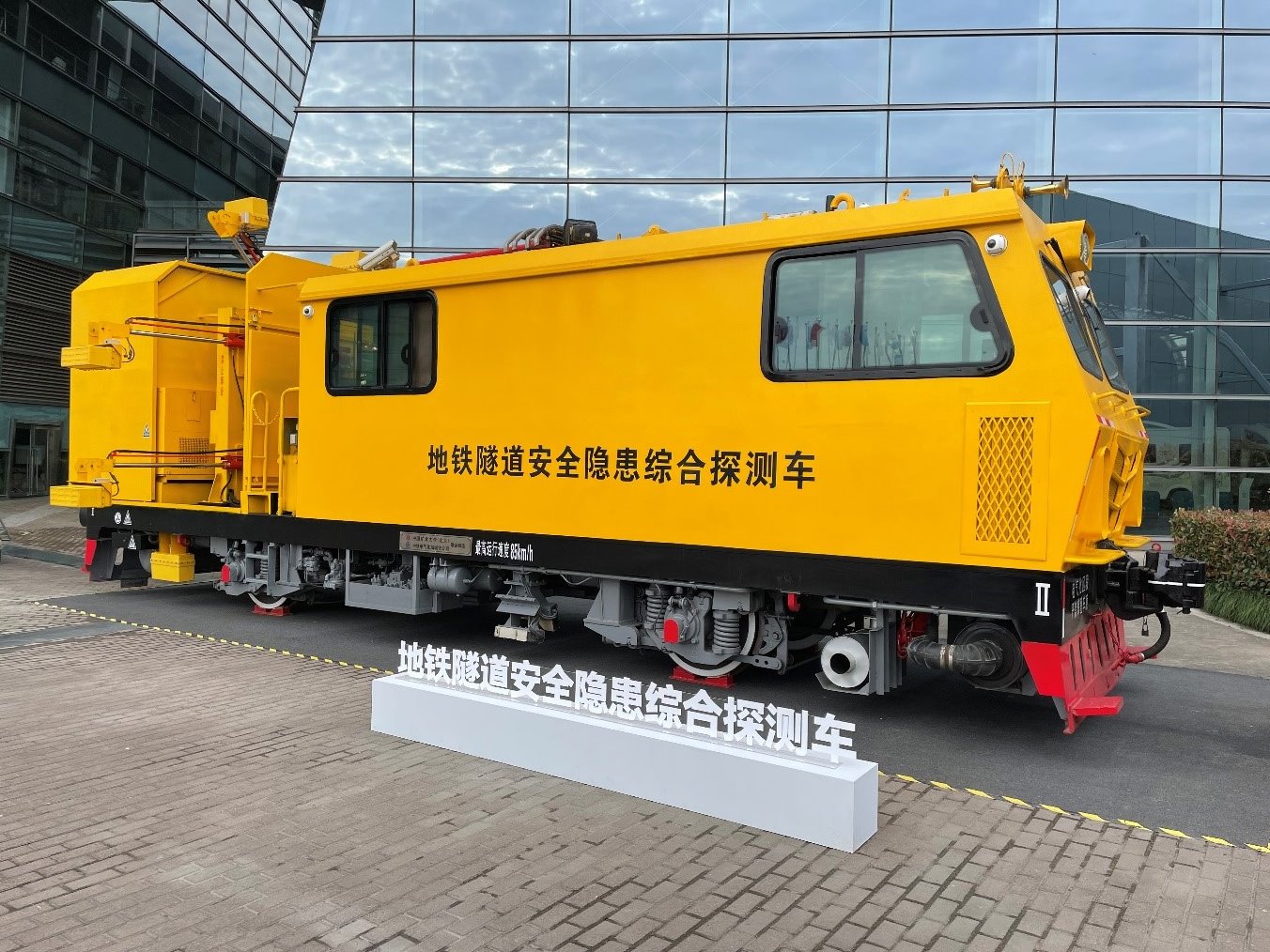
地铁隧道安全隐患综合探测车
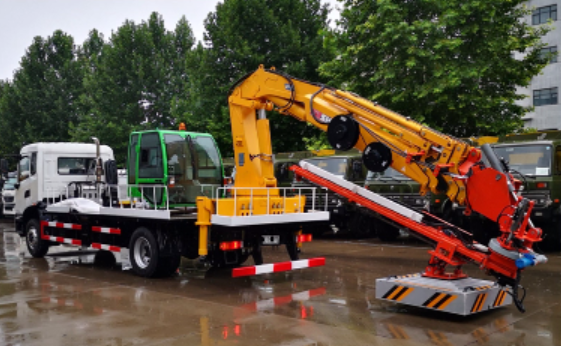
超深探测大功率地质雷达车
The recent "6.13" Shiyan gas explosion accident and "6.25" major fire accident in Zhecheng County once again sounded the alarm for urban safety.
With the help of scientific and technological forces, the use of advanced monitoring equipment and modern means such as big data and the Internet of things to continuously open up data islands and strengthen the use of information technology to enable urban safety management can timely find risks, manage and control risks, resolve risks and improve the sense of acquisition, happiness and security of urban people.
This issue introduces the typical practices of some cities in science and technology to help safety development in the aspects of lifeline engineering monitoring, parking management of dangerous chemicals, safety and health monitoring of long-span bridges, safety detection of urban roads and underground space, for the exchange and reference of cities. This is the second issue.
Strengthen the dynamic early warning of urban lifeline
Hefei "urban lifeline safety operation monitoring system"
Focusing on the prevention of major safety accidents such as gas explosion and bridge collapse, Hefei took the lead in building an "urban lifeline safety operation monitoring system", using more than 100 monitoring sensors and relying on technologies such as big data, cloud computing, blockchain and artificial intelligence to conduct real-time monitoring of urban lifelines such as water supply and drainage, gas, heat and bridges in high-risk and densely populated areas, Establish an innovative model of "front-end perception - risk positioning - professional evaluation - early warning linkage" for fine governance of safe operation and control of urban lifeline project, so as to realize rapid and accurate risk positioning, timely early warning treatment and prevention.
At present, more than 80000 sets of front-end sensing equipment have been deployed in Hefei, covering 51 bridges, more than 2000 kilometers of underground pipelines such as water supply and drainage, gas and heat, and 58 kilometers of comprehensive pipe gallery. A three-level linkage disposal mechanism for early warning information has been established, and a big data center and 24-hour monitoring center have been established to collect and analyze more than 50 billion pieces of operation data in real time every day, Timely push the early warning information to the urban lifeline transportation management enterprises, industry competent departments and the municipal emergency command center, and handle the early warning information in linkage. Since the operation of the system, 92.8 monthly effective alarms have been realized, and more than 6000 sudden dangerous situations such as gas pipe network leakage, excessive biogas concentration, water supply pipe network leakage, abnormal operation of water plant pump station, road collapse and heavy vehicle overload have been successfully warned. Compared with before the application of the system, the accident rate of underground pipe network in the city decreased by 60% and the risk investigation efficiency increased by 70%.
Early warning cases
At 9:20 on September 24, 2019, the gas monitoring system found that the gas well rq9148 located under the viaduct of Langxi Road near the intersection of Yuxi Road and Xingfu road had an alarm of methane concentration exceeding the limit. After analysis and judgment, it was preliminarily judged as gas leakage and sent to the gas group in time. After on-site review by the gas group, it was confirmed that the gas pipeline leakage was caused by the third-party construction. It was found that the combustible gas had been filled for about 23.5m, the concentration burst the meter, and the site was full of pungent smell. The location of gas pipeline leakage is in the old urban area, with a large population density. Above it is Langxi Road Viaduct with large traffic flow. There are 5 party and government organs, 9 schools, 3 hospitals, 1 Sinopec gas station, 1 large viaduct and 1 large commercial square within 300m around. Once an explosion occurs, it will cause huge casualties Property damage and bridge damage. The gas group immediately closed the block valves at both ends of the leakage point for emergency repair, and the emergency repair of the gas pipeline was completed in the early morning of September 25, avoiding the occurrence of malignant events.
Hefei "safety operation monitoring center of urban lifeline project"
"Internet of things early warning system for fire protection of people's livelihood project" in Jianye District, Nanjing
Nanjing Jianye "smart fire" construction mode refers to Jianye District People's livelihood fire Internet of things project. The project was built in 2018 and has now been constructed in phase III. Jianye IOT platform uses standard NB IOT data communication protocol and standard terminal communication protocol to access various fire IOT sensing terminal equipment of various brand manufacturers. The sensing terminal can detect information such as combustible gas leakage, excessive smoke, overheating of electrical lines, insufficient pressure of fire hydrant pipe network and insufficient liquid level of fire water tank, and report information and alarm to the platform. After the platform receives the alarm information, if it is a fault information, it will directly notify the operation and maintenance unit for disposal; If it is a fire or gas alarm, timely notify the residents to deal with the alarm or escape, and notify the firefighters / fire secret service personnel of the nearby fire station to timely verify and deal with the initial fire. Once the real fire is confirmed, directly push the 119 intelligent alarm receiving and handling system to report.
At present, Jianye Internet of things has deployed more than 10000 sets of fire front-end sensing equipment, including more than 4000 wireless smoke detectors, more than 6000 wireless combustible gas detectors, 176 sets of simple sprinkler devices and 312 sets of wireless water pressure detectors. The terminal equipment is mainly distributed in nine small places in the streets and communities of Jianye District, electric vehicle charging points, vulnerable families in old communities and group rental houses, covering 6 streets, 72 communities, 4 business buildings and 1 dispatch office in the livelihood projects of Jianye District, Nanjing. Jianye District fire rescue brigade has established a three-level linkage disposal mechanism for early warning information, established a big data center and a 24-hour monitoring center, collected and analyzed 100000 operation data in real time every day, and timely pushed the early warning information to urban transportation management enterprises, industrial competent departments and municipal emergency command center in a hierarchical manner to handle the early warning information in a linkage manner.
Since the operation of the system, 24.3 monthly effective alarms have been realized, and more than 796 cases of gas pipe network leakage, excessive smoke concentration, water supply pipe network leakage and abnormal operation of water plant and pump station have been successfully warned. Compared with before the application of the system, the accident rate of underground pipe network in the city decreased by 60% and the risk investigation efficiency increased by 70%. No detection and alarm equipment has been installed in the above places, which belongs to the weak link of fire prevention and control, especially the charging points of electric vehicles and places using gas. At present, it is in the stage of comprehensive distribution. In the next step, the streets and communities will be responsible for the timely verification of specific alarms in the areas under their jurisdiction, the maintenance of detection equipment and the supervision of gas pipeline maintenance through zoning and hierarchical management.
Use case
Automatically close the pipeline valve after combustible gas detection and alarm. The combustible gas detector of the manipulator is installed in the installation part of the small restaurant along the street. When the gas concentration exceeds the standard (the concentration exceeds 5% LEL), the system sends the concentration exceeding alarm to the user and the nearby fire secret service personnel, and automatically closes the pipeline valve through the manipulator to avoid gas deflagration accident.
Real alarm
At 23:39 on November 18, 2020, the gas monitoring system found that the Yinchun old halogen fire alarm in Lianhua community, Shazhou Street gave an alarm. After analysis, it is determined that the fire hazard is pushed to the duty room of Lianhua community. After review by Lianhua community, it is confirmed that the fire of noodle restaurant is caused by non-standard fire. The facade room is located in the old urban area, with large population density and more elderly people. In case of fire, it will cause huge casualties and property losses. The community immediately rectified the front room and completed the rectification in the early morning of November 19, avoiding the occurrence of malignant events.
According to statistics, the system generates an average of 5-10 early warning information every day. After verification, the combustible gas leakage alarm in the alarm information is indeed caused by the excessive detection concentration value, and the early warning function of the system is normal. Since the opening of the platform, there has been no fire accident in the installation and use units and residents. The number of alarm receiving in Jianye District decreased by 4.79% year-on-year, and there has been no deflagration accident in nine small places.
Nanjing "Jianye people's livelihood project fire Internet of things integrated sub platform"
Build intrinsically safe infrastructure
Zhangjiagang City, Suzhou establishes "smart Park Management Center"
Zhangjiagang City has worked hard to build an intrinsically safe city. Zhangjiagang City has set up the first dangerous chemical parking lot in China that meets the national industrial standards - Zhangjiagang dangerous chemical road transportation comprehensive service center in Zhangjiagang Free Trade Zone, which uses digital technology to realize the whole process safety monitoring of vehicle personnel, filling the gap in China. At the same time, a "smart Park Management Center" centered on the parking lot is established to fully cover the regulatory service function of Jiangsu Yangtze River International Chemical Industry Park.
Zhangjiagang dangerous chemicals Road Transportation Comprehensive Service Center is jointly developed and constructed by the administrative committee of Zhangjiagang Free Trade Zone of Jiangsu Province and COSCO Shipping Group, a central enterprise. It mainly undertakes the road emergency rescue of dangerous chemicals vehicles in Zhangjiagang City, the emergency rescue command center of Jiangsu Yangtze River International Chemical Industry Park, the closed management of the chemical park, the parking, refueling, tank washing The comprehensive service function integrating maintenance and testing. The total investment of the project is 450 million yuan, with 623 parking spaces, 32000 M2 class C 1 warehouse, wastewater and waste gas treatment and other facilities. The parking lot is equipped with complete fire-fighting facilities, combustible gas detection and alarm system, on-site broadcasting system, high pole infrared thermal imaging fire monitoring and alarm system, automatic fire monitor and other safety facilities and occupational health facilities. It adopts advanced technology and equipment, and is equipped with automatic elevated warehouse and world-leading Dutch tank car automatic cleaning system.
The parking lot is the first dangerous chemical parking lot in China that meets the national industrial standards (as one of the drafting units of national industrial standards), it adopts intelligent management mode for management and operation, adopts visual, information and intelligent management system, and is equipped with intelligent management systems such as vehicle guidance and identification system, personnel identity and behavior identification system, vehicle dispatching and call system, office area intelligent management system, etc. at present, it is located in the parking lot The "smart Park Management Center" of the tax district has been put into use, integrating the functions of "safety and environmental protection monitoring, emergency rescue command, cleaning, repair and refueling of hazardous chemicals professional parking lots and tank cars", and was successfully awarded the title of pilot demonstration unit of China smart Chemical Industry Park organized by China Petrochemical Federation in September 2020; At the same time, the "smart Park Management Center" also undertakes the functions of smart park management and emergency rescue command of Jiangsu Yangtze River International Chemical Industry Park, which can further improve the comprehensive capacity of road transportation management of hazardous chemicals in Zhangjiagang City and the comprehensive supervision and service capacity of the chemical park, Better provide safe and reliable guarantee for the economic development of the chemical industry park and Zhangjiagang.
Zhangjiagang dangerous chemicals Road Transportation Comprehensive Service Center
Safety and health monitoring of long-span bridges
Bridge monitoring radar system
China has more than 870000 highway bridges with a total length of more than 60000 kilometers, including more than 5700 super major bridges and nearly 110000 bridges with a total length of about 40000 kilometers. In particular, the construction of long-span bridges has greatly improved the urban and rural transportation capacity and promoted the sustainable development of economy and society. Long span bridges have the advantages of good structural stiffness, smooth traffic and less expansion joints, but they also have the disadvantages of large long-term deformation of the main span.
The safety monitoring of long-span bridges plays a very important role in ensuring the safety of bridge construction and operation and prolonging the service life of bridges. In the early stage of bridge deformation and instability, it often shows abnormal vibration. The traditional deformation monitoring based on cumulative displacement and displacement velocity has some limitations.
Based on transient array aperture technology and microwave remote sensing differential interferometry technology, GT vibrad bridge monitoring radar system can measure the surface displacement of the measured target with high frequency and high precision, and has a good monitoring effect on artificial structures such as bridges and buildings.
Application case of bridge monitoring radar system
In May 2020, after the vortex vibration incident of Humen Bridge in Guangdong, the emergency management department and the Ministry of transport organized an expert team to investigate the long-term service safety risks of long-span bridges in China, and dispatched the national production safety emergency rescue survey team to monitor and analyze three typical long-span bridges.
Using GT vibrad bridge monitoring radar system, the emergency rescue survey team carried out real bridge survey on three long-span long-term service bridges of Humen Bridge in Guangdong, Jiangyin Yangtze River Highway Bridge in Jiangsu and Yangpu Bridge in Shanghai, measured the vibration modal parameters of the main bridge of typical bridges, collected the three-dimensional point cloud model of the bridge structure, and interpreted the radar signal spectrum of the lower concrete layer, Through data comparison and position registration with the deployed measuring points, the measurement results of bridge deck displacement, acceleration, vibration mode and other parameters are successfully obtained, which provides data support for the investigation work of the expert team.
GT vibrad bridge monitoring radar system is developed by China Academy of work safety, It has high monitoring accuracy (monitoring accuracy 0.01mm), all-day monitoring (not affected by lighting conditions), all-weather monitoring (not affected by weather conditions) and long telemetry distance (monitoring distance 1km), no personnel on site, self correction of atmospheric error, real-time update of monitoring data and other functional features. It can be used in the fields of nondestructive testing and acceptance of new bridges and large buildings, safety evaluation and monitoring of existing bridges and large buildings, on-line monitoring and early warning of critical life bridges and large buildings.
Vibration mode monitoring of main bridge of Humen Bridge in Guangdong
Vibration modal monitoring of the main bridge of Jiangyin Yangtze River Highway Bridge in Jiangsu Province
Safety detection of urban road and underground space
During the development and utilization of urban roads and underground space, urban underground cavities, corrosion and fracture of underground pipelines, excessive deformation of underground pipe corridors and subway tunnels, segment dislocation, water leakage, hollowing, cavities behind structures and other potential safety hazards have seriously threatened the safety of urban underground space.
Shenzhen "urban road and drainage network safety monitoring system"
Shenzhen focused on preventing major safety accidents caused by urban road collapse due to damage of urban drainage pipe network, and joined hands with the National Academy of safety science and engineering China University of mining and Technology (Beijing) took the lead in building the "urban road and drainage network safety monitoring system", using multi frequency on-board ground penetrating radar technology and integrating big data, cloud computing, 5g artificial intelligence and other technologies to carry out real-time detection and monitoring of urban roads, water supply and drainage and other urban lifelines in high-risk and densely populated areas, and establish "detection positioning interpretation early warning" The new urban road and drainage pipe network safe operation and management and control fine governance innovation mode, so as to realize rapid and accurate risk positioning, timely early warning, treatment and prevention.
The total mileage of water supply and drainage network management in Futian District of Shenzhen is 1400km. After two months of accurate investigation, 36 dangerous situations were found, including 3 large underground hidden diseases, with a scale of 65 m2. Using vehicle mounted multi frequency ground penetrating radar technology, the accident rate of underground pipe network in the whole region was reduced by 60% and the risk investigation efficiency was improved by 70%. It has greatly improved the ability to deal with road safety risks and made positive contributions to ensuring the safety of urban roads and drainage networks.
Road underground disease detection vehicle
13A0A
Pipeline disease detection robot
Rescue case of water inrush in Beijing Winter Olympic branch line
At 8 p.m. on June 7, 2021, a water inrush accident occurred during the excavation of a section of Beijing Winter Olympic branch tunnel, and the water inflow reached 300 m3 / h. After the incident, the ultra deep detection high-power geological radar was used for ultra deep detection of the specified mileage section. A water rich area with a depth of 17.2-23.0m and a horizontal length of 12.5m was found near the tunnel face. At the same time, another water rich area with a depth of 16.5-22.1m and a horizontal length of 10m was predicted 40 meters in front of the tunnel face. Afterwards, the ground penetrating radar detection was carried out in the tunnel, and there were wooden piles, broken coal and other sundries gushing out near the water inlet of the tunnel face. After visiting the surrounding area and consulting relevant data, it was preliminarily judged that the accident section was the roadway of the early abandoned small coal mine. After a long time of surface water leakage, the roadway was filled with water, which may be the main reason for the sudden water gushing in the tunnel face.
Aiming at the engineering geological hidden dangers in different periods such as "urban lifeline project" - Metro Tunnel planning and survey, tunnel construction and operation, Beijing Zhuzong group has carried out intelligent detection of metro tunnel foundation pit ultra depth and ultra front, comprehensive detection of metro tunnel safety hidden dangers, uneven detection of slurry injection outside shield segment, and built an intelligent diagnosis and control system of metro tunnel safety hidden dangers